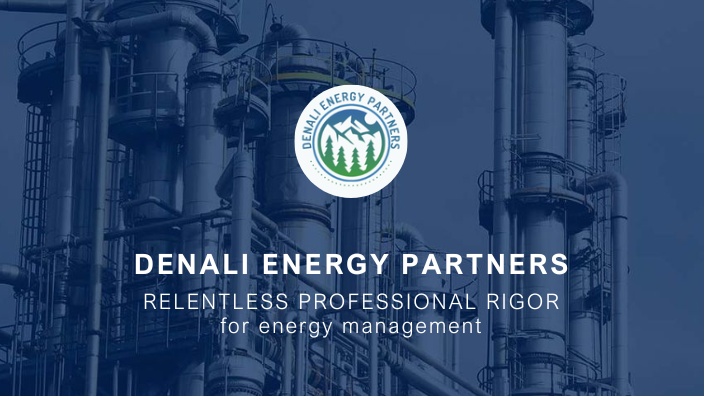What Are the Current Costs and Electricity Rates in Industrial Parks in Mexico?
Denali-ep
| 15 de octubre de 2024
What Are the Current Costs and Electricity Rates in Industrial Parks in Mexico?
Introduction
Industrial parks are key drivers of the Mexican economy, housing numerous companies that generate employment and contribute to economic development. This article explores the electricity costs and rates faced by these parks, breaking down the factors that influence tariffs, the different types of available rates, and providing strategies for cost reduction. We also examine the impact of renewable energies and future market prospects for electricity in industrial parks.
Overview of Industrial Parks in Mexico
History of Industrial Parks
Industrial parks in Mexico emerged in the mid-20th century as a response to the need for adequate infrastructure for industrial development. These areas are specifically designed to concentrate industrial companies, offering shared services and logistical facilities.
Importance of Industrial Parks in the Economy
Industrial parks are fundamental to the Mexican economy as they facilitate the concentration of businesses, improve logistics, and provide specialized infrastructure. This promotes both national and foreign investment, generating jobs and significantly contributing to the country's GDP.
Factors Influencing Electricity Costs in Industrial Parks
Production and Distribution of Electricity
The cost of electricity production and distribution in industrial parks depends on available infrastructure, fuel costs, and the efficiency of generating plants. Fluctuations in fossil fuel prices and network maintenance also affect costs.
Regulation and Government Policies
Government policies and regulations play a crucial role in determining electricity rates. Energy reforms and decisions made by the Energy Regulatory Commission (CRE) have a direct impact on costs faced by industrial parks.
Energy Demand and Supply in Industrial Parks
Electricity demand in industrial parks can vary based on economic activity and time of day, influencing prices. Higher demand may lead to increased prices, while abundant supply can help reduce them.
Types of Electricity Rates for Industrial Parks
High-Tension Industrial Rates
High-tension rates are designed for large electricity consumers that require high voltages for their operations. These rates are typically lower per kilowatt-hour (kWh) due to high consumption volumes.
Medium-Tension Industrial Rates
Medium-tension rates apply to industrial consumers requiring an intermediate voltage level. These rates are suitable for medium-sized companies with significant electricity needs but not as high as those of large consumers.

How Electricity Rates Are Calculated in Industrial Parks
Components of the Rate
Electricity rates in industrial parks consist of several elements: generation costs, transmission, distribution, and additional charges such as taxes and subsidies.
Calculation Methods
The CRE establishes methods for calculating rates, considering factors such as operational costs of the Federal Electricity Commission (CFE), infrastructure investments, and fluctuations in fuel prices.
Comparison of Electricity Rates Across Different Industrial Parks
Regional Factors Affecting Rates
Electricity rates can vary significantly among different industrial parks in Mexico due to factors such as local infrastructure, transportation costs, and regional demand.
Examples of Rates in Different Industrial Parks
For example, industrial parks in northern Mexico may have higher rates due to increased demand in warmer climates, while those with access to renewable energy sources may benefit from lower rates.
Impact of Renewable Energies on Costs for Industrial Parks
Renewable Energy Projects in Industrial Parks
Mexico has invested significantly in renewable energy projects within industrial parks, such as solar and wind energy. These projects not only help reduce dependence on fossil fuels but can also contribute to stabilizing long-term electricity costs.
Benefits and Challenges
Renewable energies offer environmental benefits and potential economic advantages but also present challenges such as generation intermittency and the need for significant initial investments.
Government Programs and Subsidies for Industrial Parks
Financial Subsidies and Support
The Mexican government offers subsidies and financial support to help industrial parks manage electricity costs. These subsidies can significantly reduce electricity bills, especially for high-tension industrial consumers.
Incentives for Renewable Energy Use
In addition to subsidies, the government provides incentives to promote renewable energy use within industrial parks, such as tax credits and financial support for solar panel installations.
Tips for Reducing Electricity Costs in Industrial Parks
Energy Efficiency Strategies
An effective way to reduce electricity costs in industrial parks is to implement energy efficiency strategies. This includes using efficient equipment and machinery and optimizing production processes.
Use of Advanced Technologies
Adopting advanced technologies like energy management systems and automation can help monitor and control electricity consumption, thereby reducing operational costs.
Impact of Electricity Rates on Competitiveness of Industrial Parks
Effect on Operating Costs
Electricity rates have a direct impact on operating costs for industrial parks. Higher rates can increase operational expenses, reducing competitiveness for companies operating within these parks.
Influences on Investment Attraction
Competitive electricity rates can attract both national and foreign investments, boosting economic growth and job creation within industrial parks.
Future Perspectives on Electricity Costs in Industrial Parks
Expected Trends
Electricity costs in Mexico's industrial parks are expected to continue being influenced by developments in energy technologies, government policies, and global energy market conditions.
Technological Innovations
Innovations in energy storage technologies, such as lithium batteries, along with smart grid development may help manage demand and optimize resource use, potentially reducing long-term costs.
Case Studies: Electricity Rates in Industrial Parks from Other Countries
Comparison with Mexico
Comparing electricity rates from industrial parks in Mexico with those from other countries can provide valuable insights. Countries like Brazil and Chile face similar tariff structures but also present significant differences.
Lessons Learned
From these countries, Mexico can learn about implementing renewable energies and subsidy policies while seeking to adapt best practices to its national context.
Opinions from Industrial Park Administrators on Electricity Rates
Surveys and Testimonials
Surveys and testimonials from industrial park administrators can provide clear insights into common perceptions and concerns regarding electricity rates.
Main Complaints and Suggestions
Common complaints often relate to high costs and lack of transparency in billing. Common suggestions include the need for greater investment in renewable energies and improving electrical grid efficiency.
Conclusion
In conclusion, understanding the costs and electricity rates in Mexico's industrial parks requires consideration of multiple factors—from production and distribution to government policies and market trends. With investments in renewable energies and greater energy efficiency, there are opportunities to stabilize and potentially reduce long-term costs. It is essential for industrial park administrators to stay informed about available programs and subsidies to better manage their electricity bills.
What are the current electricity rates for industrial parks in Mexico?
Electricity rates in Mexico vary by region and type of service. On average, clients in industrial parks pay about $0.11 USD per kWh, which includes demand charges and time-of-use rates. Rates can fluctuate based on the time of day and season, with specific peak and off-peak pricing structures.
What factors influence electricity costs in industrial parks?
Several factors affect electricity costs, including the production and distribution infrastructure, fuel prices, government regulations, and regional demand for electricity. The efficiency of generating plants and maintenance of the electrical grid also play significant roles.
Are there different types of electricity tariffs available for industrial users?
Yes, there are various tariffs depending on the voltage level and consumption needs. For instance, high-tension tariffs are designed for large consumers requiring high voltage, while medium-tension tariffs apply to medium-sized companies with significant electricity needs.
How can industrial parks reduce their electricity costs?
Industrial parks can implement energy efficiency strategies, adopt advanced technologies for energy management, and explore renewable energy options to lower their overall electricity expenses. Government subsidies and incentives for renewable energy use can also help reduce costs.
What impact do electricity rates have on competitiveness in industrial parks?
Higher electricity rates can increase operational costs, making it challenging for companies to remain competitive. Conversely, competitive electricity rates can attract both national and foreign investments, fostering economic growth within the parks 3.




